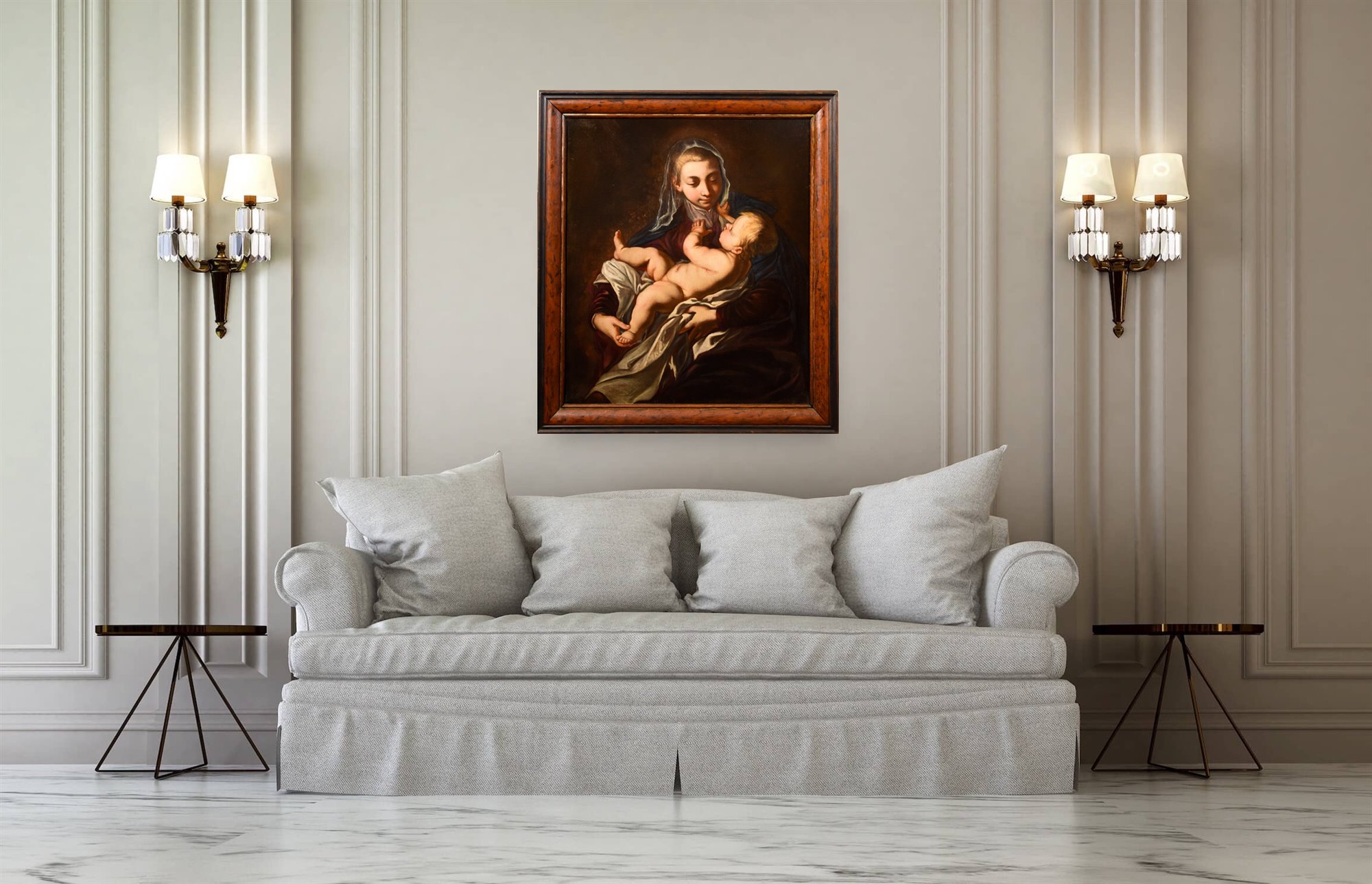Madonna con il Bambino
Alessandro Tiarini (Bologna 1577 - 1668)
Emilian Caravaggesque painter of the early seventeenth century
Alessandro Tiarini (Bologna, 1577 - 1668), attributable
Alessandro Tiarini (Bologna, 1577 - 1668), attributable
Madonna and Child
Early seventeenth century
Oil painting on canvas
cm. 96 x 82
In frame cm. 111 x 98
Complete details of the work:
This composition, where the Virgin in the guise of a young girl holds the Child in her arms, is a work of high quality and importance, to be placed in the context of the Emilian seventeenth century, with evident references to Caravaggio's poetics, both in use of colors and light, as well as in the play of chiaroscuro contrasts.
Dated to the early 17th century, the painting exhibits more precisely Bolognese characters, and the similarities with the late works of Alessandro Tiarini (Bologna 1577 - 1668) are close enough to confirm the attribution.
The artist, trained with prosperous Fontana and Bartolomeo Cesi, is also documented in Florence from 1599 to 1606, as a pupil and collaborator of Passignano. Returning to his homeland he participated in the naturalistic renewal inaugurated by the Carraccis and in particular by approaching the ways of Ludovico, renewing his style in a fully baroque key and with an unparalleled emotional and chromatic verve.
In adhering to a solution with a strong dramatic impact, which is influenced by Caravaggesque stylistic models, Tiarini outlines a pictorial poetics of great impact. Observing the face of the Virgin, in which the painter highlights the ingenuity and tenderness transmitted by her young age, one notices the sense of tenderness and at the same time unawareness that the painter wants to convey.
It is interesting that in the painting neither the Virgin nor the baby Jesus look towards the observer: everything remains as if held within the canvas and the essence of the work is played on the mutual exchange of glances and contacts between mother and child. The ritual solemnity that characterizes the depictions of the Virgin with the Child is not perceived; and even the lack of any sacred attribute could make our canvas look like a profane subject, a moment of family intimacy, or a simple allegory of motherhood.
The use of light, wisely dosed by the painter, which radiates on the characters from the left, playing a fundamental role in shaping the volumes, as well as that of the colors, where on a dull background, linked to brown tones, the painting lights up with light in the complexions of mother and child and in the splashes of bright colors, magenta red and blue, chosen for the clothes.
If you wish to learn more about the author's work, we recommend that you consult the following volume: E. Negro - N. Roio, Caravaggio and the Caravaggeschi in Emilia, Modena 2013, pp. 244-247.
Certificate of guarantee and photographic authenticity in accordance with the law
For any information, you are welcome to contact us.


